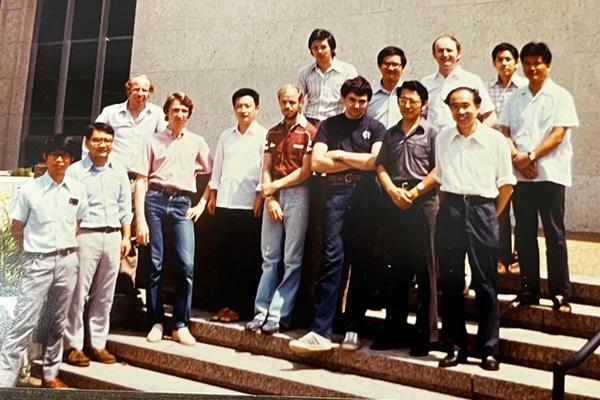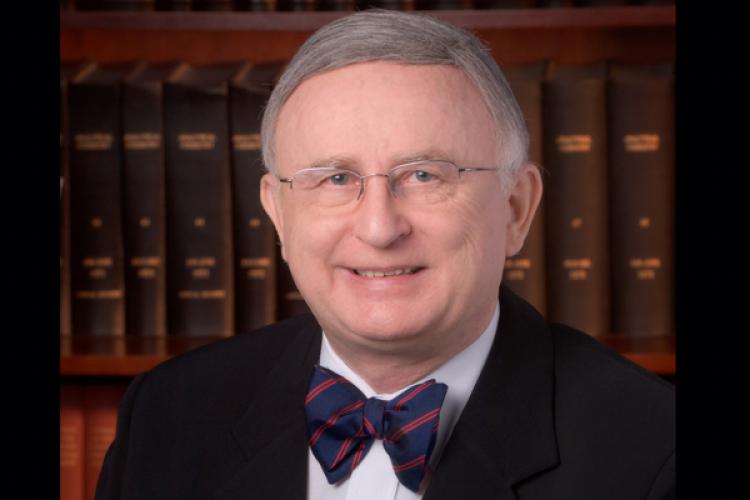
University Community Mourns Distinguished Professor of Chemistry Tadeusz Malinski

The Ohio University community mourns the passing of Distinguished Professor of Chemistry Tadeusz Malinski on Sept. 13 at the age of 77.
Malinski, twice nominated for the Nobel Prize, joined Ohio University's Chemistry and Biochemistry Department in 2000 and served most recently as the Marvin and Anne Dilley White Professor of Biomedical Sciences until retiring last summer.
Malinski was a native of Poland, and a funeral and memorial service was held Nov. 6 in Poland.
"Our father was born and grew up in communist controlled Poland before escaping here to the U.S. His discoveries would eventually lead him toward being a Distinguished Professor at Ohio University. Though for all his brilliance he was still often the absent-minded professor, living in his own world, often driving us crazy with his uncompromising ways. But he was more than just a professor, he was a painter, an art collector, an athlete, an adventurer, and a patriot for his native land of Poland," wrote his sons, Peter and Christopher, in a memorial to their father. Both sons graduated from OHIO, Peter in chemistry in 2011 and Christopher in chemistry and political science in 2015.
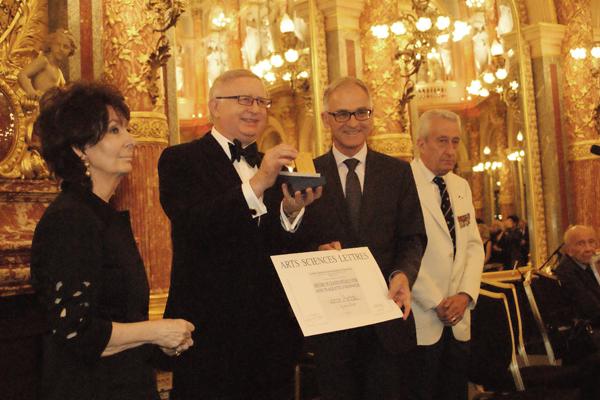
A pioneer in nanomedicine
Malinski has been nationally and internationally recognized as a pioneer in the field of nanomedicine. He developed new technologies and methods for the early diagnosis and treatment of cardiovascular and neurodegenerative diseases. He was the first in the world to measure nitric oxide – the “molecule of life” – in a single biological cell by employing a self-designed sensor with a diameter 700 times smaller than a single strand of hair. He received the Albrecht Fleckenstein Memorial Award for Distinguished Work in the Field of Basic Research for Cardiology from the International Academy of Cardiology.
In 2020, Malinski was named a fellow of the National Academy of Inventors, the highest professional distinction accorded solely to academic inventors. He also discovered the role of Vitamin D3 in the function and restoration of cardiovascular damage caused by heart attack and aging. His study showed that Vitamin D3 can significantly restore the damage to the cardiovascular system caused by several diseases, including hypertension, diabetes and atherosclerosis.
Malinski also filed a U.S. patent for “Systems and Methods for Promoting Wound Healing,” a system that provides optimal, efficient and controlled delivery of nitric oxide and carbon monoxide gases, which have been shown to promote accelerated healing. The system would provide tailored delivery rates for nitric oxide and carbon monoxide based on the specific wound type, such as burns, venous ulcers or diabetic foot ulcers.
Among his international awards were France's Grand Gold Medal by the Society of Arts-Sciences-Letters and multiple Doctorate Honoris Causa in medicine from Polish and European universities. Malinski published more than 300 research articles.
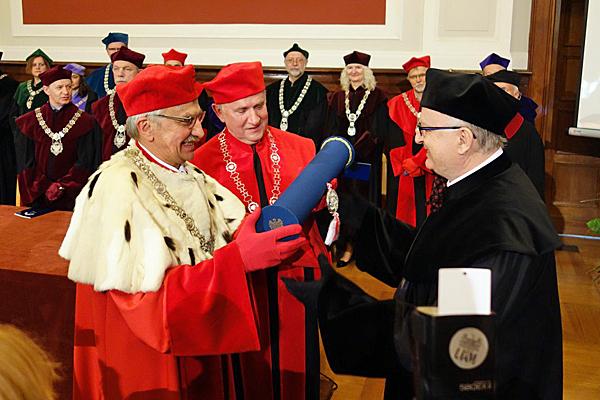
A gentleman and a scholar
"Tad had a European gentleman’s charm and demeanor," recalled Dr. Howard Dewald, chemistry professor in the College of Arts and Sciences. "While being a scientific innovator in research, he strongly preferred to converse with you by phone. If you sent him an email, he would pick up the phone to call you."
Ken Brown, Emeritus Professor of Chemistry and Biochemistry, who was part of the effort to bring Malinski to OHIO, noted, "I hired Tad way back when. In addition to being an outstanding scientist, he was an elegant European gentleman and a good friend. He will be missed."
For Michael Jensen, associate professor of chemistry, Malinski provided the newly minted Ph.D. graduate with the motivation to pursue fundamental chemistry research and a pathway to Ohio University.
Having taken a position with Monsanto Corporate Research outside St. Louis in the 1990s, Jensen found himself tasked with developing small molecule metal complexes that would catalyze decomposition of peroxynitrite, a cytotoxic product of radical coupling between nitric oxide and superoxide. "I knew almost nothing about the burgeoning field of nitric oxide biochemistry. As a chemist, the first question that naturally came to mind was the actual concentration of NO and downstream products present in vivo. However, it seemed that pharmaceutical chemists were disposed toward drugging fixed biological targets, not engaging in bimolecular catalysis, so my inquiries fell flat," he recalled.
Jensen headed alone into Monsanto's vast library to pursue an answer.
"A comprehensive literature search led me directly to a stunningly elegant and highly relevant paper in Nature, 'Nitric oxide release from a single cell measured in situ by a porphyrinic-based microsensor,' written by Tadeusz Malinski and Ziad Taha of Oakland University in Rochester, MI. Appearing in what many regard as the world's premier scientific journal, this trailblazing article has been cited over 1,000 times. Aside from providing a quantitative answer to my question, this article reminded me of the power of fundamental chemical research. I was immediately motivated to return to academics with renewed vigor," Jensen said. "Tad was truly inspiring as a distinguished scientist and as a dedicated mentor, and I will treasure his memory and contributions."
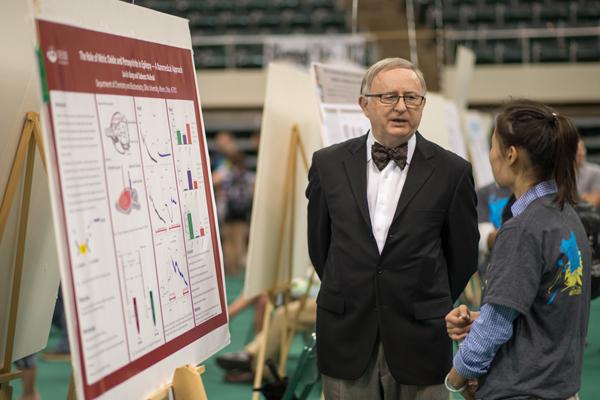
An amazing mentor
Malinski successfully mentored more than 20 Ph.D. student dissertations at Ohio University, along with several at Oakland University, where he taught before coming to OHIO.
"Dr. Malinski and the Chemistry Department had an enormous impact on my life," said OHIO alumnus Michael Wagner, who earned a B.S. in Chemistry in 2013, followed by a Ph.D. in Chemistry in 2020.
"I had recently transferred to Ohio University and got a job in the machine shop with Bascom French servicing the labs in Clippinger. At the time, Dr. Malinski was serving as the Department Chair. I expressed interest doing undergraduate research to Frenchie and Paula Hale, and they connected me with Dr. Malinski. He welcomed me into the lab as an undergraduate, encouraged me to apply to graduate school and stay and get my Ph.D., and vouched for me during the admissions process. He was instrumental in me growing as a person and as a scientist, encouraging me and coaching me through my graduate degree, and giving me full license to take my research where I felt I needed it to go," Wagner said.
He added that Malinski "never micromanaged or dictated what I do next, empowering me to build my own story in the lab. I genuinely cherish my time at Ohio University in his lab getting my Ph.D. as a period of immense personal and scientific growth. I would not be who am I today without him," said Wagner, who works as a bioanalytical chemist at Battelle Memorial Institute.
Alumnus Adam Jacoby, who earned a Ph.D. in Chemistry in 2010 and was a graduate student in Dr. Malinski’s lab, recalled, "Dr. Malinski was a hard-working researcher who took the complexities of measuring chemicals in the paintings of Old Masters and directed that toward the treatment of disease. I was given the opportunity to learn a wide variety of techniques from him that showed me so much about the nano-scale world."
"I thank him for teaching me and helping me research just one little piece of his grand masterpiece of saving lives through medicinal chemistry. May your innovations live on through lives saved," Jacoby added.
